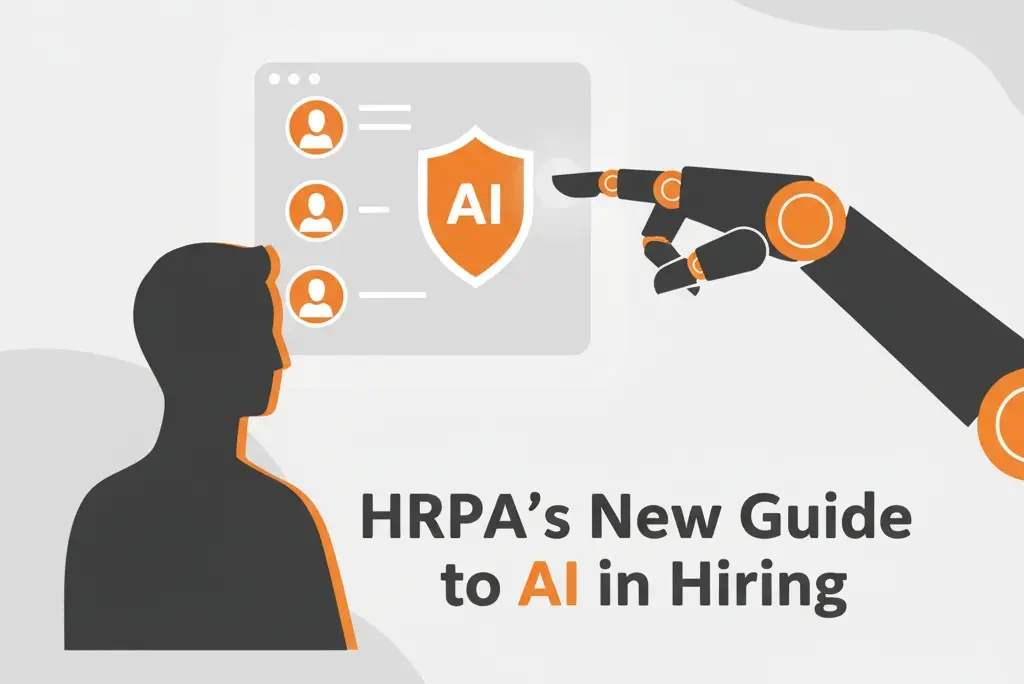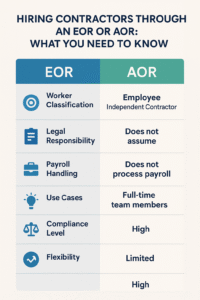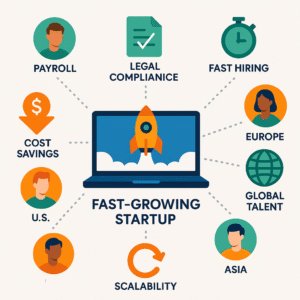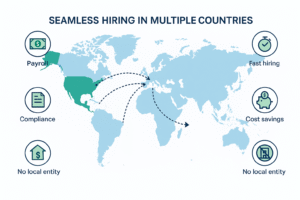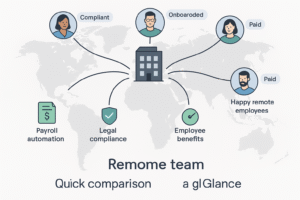Artificial intelligence is no longer a futuristic concept—it’s in our HR departments, right now. From screening resumes to conducting initial video interviews, AI promises to make recruitment faster and more efficient. But with this new power comes significant risk. That’s why the Human Resources Professionals Association (HRPA) just released critical new guidance on using AI in hiring. For Ontario business owners and HR managers, this isn’t just interesting reading; it’s an essential roadmap to navigating compliance and ethics in a rapidly changing landscape.
At Divino, we see the appeal. The right tools can sift through hundreds of applications in minutes, freeing up your team for more strategic work. The problem is, without proper oversight, these powerful tools can also introduce serious legal and ethical problems, from algorithmic bias to privacy violations. As we always say, it’s critical to understand why “Introduction: Why HR Compliance Is Non-Negotiable”
The Double-Edged Sword: AI’s Promise and Peril
AI-powered recruitment platforms are marketed as a solution to human bias. In theory, a machine can’t have a bad day or unconsciously favour a candidate who went to the same university. They promise to analyze skills and experience objectively to find the best fit.
However, the reality is more complex. AI learns from the data it’s given. If your company’s historical hiring data contains biases (and most does), the AI will learn and even amplify those biases. It might incorrectly screen out qualified candidates from underrepresented groups or favour keywords found on the resumes of past hires, creating a feedback loop that stifles diversity. This is a massive compliance risk under the Ontario Human Rights Code.
“An algorithm is only as good as the data it learns from. If your past is biased, your future will be too, unless you actively intervene.”
Beyond bias, there are other concerns. How is a candidate’s data being stored and used? Does your automated system provide the necessary accommodations required under the Accessibility for Ontarians with Disabilities Act (AODA)? Rushing to adopt new technology without asking these questions is a recipe for a costly complaint. It’s a good time to review your obligations, as “AODA Rules Changing: Is Your Website Ready for 2027?“
HRPA’s New Guide to Using AI in Hiring: Key Takeaways
The new HRPA guidance provides a framework for responsibly integrating technology into your recruitment process. It isn’t about avoiding AI, but about adopting it thoughtfully and ethically. We’ve distilled the report into four key principles for Ontario employers.
1. Maintain Human Oversight at All Times
The guide is clear: AI should be a co-pilot, not the pilot. Technology can augment human decision-making, but it should never fully replace it. Final hiring decisions must always rest with a person. This “human-in-the-loop” approach ensures that context, nuance, and qualitative factors are considered. It also provides a critical check against potential algorithmic errors or biases that the system may produce.
2. Demand Transparency from Your Vendors
Before you purchase any AI recruitment tool, you need to ask tough questions. How does the algorithm work? What data was it trained on? How does the vendor test for and mitigate bias? Reputable vendors should be able to provide clear, understandable answers. If a vendor’s technology is a “black box” and they can’t explain its decision-making process, that’s a major red flag. Your business is ultimately responsible for its hiring practices, even if you’re using AI in hiring through a third-party tool.
3. Prioritize the Candidate Experience
How does your use of AI feel to the applicant? A poorly implemented chatbot or a confusing automated interview process can alienate top talent. The HRPA stresses the importance of transparency with candidates. Let them know when they are interacting with an AI system. Provide a clear way for them to request an alternative process or human interaction if needed, which is crucial for AODA compliance. A positive candidate experience is vital for your employer brand.
4. Conduct Regular Audits for Bias
Implementing an AI tool is not a “set it and forget it” process. The HRPA recommends that organizations conduct regular audits of their automated hiring systems. This involves analyzing the outcomes to ensure the tool is not disproportionately screening out candidates based on protected grounds like age, gender, or ethnicity. This proactive monitoring helps you catch and correct discriminatory patterns before they become systemic problems, protecting your organization and ensuring you’re building a diverse and inclusive workforce.
What Ontario Employers Should Do Next
Navigating the complexities of using AI in hiring can feel overwhelming, but ignoring it is not an option. Based on the HRPA’s guidance, here are three immediate steps every Ontario employer should take:
- Audit Your Current Tech Stack: Review every tool you currently use in your hiring process, from your Applicant Tracking System (ATS) to any assessment software. Identify which ones use AI or automation and ask if they align with the HRPA’s principles of transparency and fairness.
- Train Your Hiring Managers: Your team needs to understand the benefits and risks of these new tools. Provide training on how to interpret AI-driven recommendations, how to spot potential bias, and the importance of keeping humans at the centre of the final hiring decision.
- Update Your Recruitment Policies: Your internal policies should reflect your approach to AI. Create clear guidelines on the acceptable use of AI tools, your commitment to human oversight, and the process for auditing these systems for compliance and fairness.
Technology is a powerful asset in the war for talent. By following the expert guidance from the HRPA, Ontario businesses can harness the power of AI to build stronger teams while upholding their legal and ethical obligations.
Need help navigating HR changes? Book your free HR audit today or speak with our team about how Divino can support your business.
Sources
- Ontario Human Rights Commission – “Human rights and rental housing”: https://www.ohrc.on.ca/en/policy-human-rights-and-rental-housing (Used as a proxy for policy on discrimination)
- Government of Ontario – “Accessibility for Ontarians with Disabilities Act (AODA)”: https://www.ontario.ca/laws/statute/05a11
